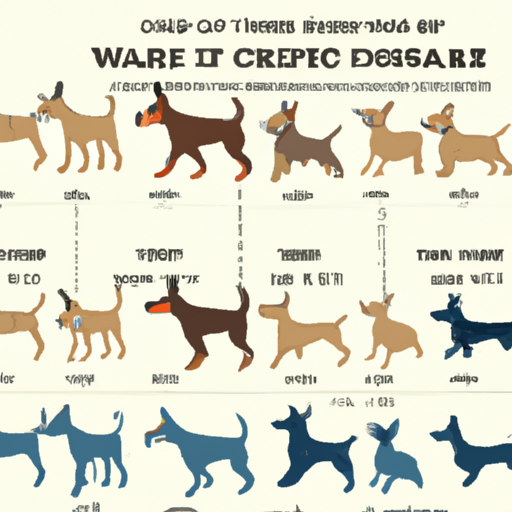“`
How to Tell a Dog’s Age
Introduction
Hello, dear caregiver! I know you’re here because you’re eager to understand your furry friend better. Just like us humans, our canine companions also age and go through different life stages. Knowing their age is vital in providing them with the best care possible. But how can you tell a dog’s age, especially if they’re a rescue or stray with an unknown history? Let’s dive into this together.
Looking at the Teeth
One of the most reliable methods of determining a dog’s age is by examining their teeth. This method works best with puppies and younger dogs.
- Puppies: By 8 weeks, all their baby teeth are in. By 7 months, all permanent teeth are present and are usually white and clean.
- Adult dogs: Teeth have some yellowing by 1-2 years. By 3-5, all teeth may show signs of tartar build-up and wear.
- Senior dogs: May have significant tartar, possibly some missing teeth.
Remember, diet and care can affect a dog’s dental health, so this is only a rough guide.
Observing Physical Changes
As they age, dogs undergo various physical changes.
- Eyes: Young dogs have bright, clear eyes. In older dogs, you might notice cloudiness or a milky appearance.
- Coat: Puppies have soft, fine fur. Adult dogs have thicker, fuller coats. Older dogs may have grey or white hair, particularly around the snout.
- Body Composition: Older dogs are more prone to weight gain or loss. They may also lose muscle mass, leading to a bonier appearance.
Considering the Breed
Different breeds age at different rates. For example, larger breeds tend to age faster than smaller ones. Here’s a simple comparison table:
| Breed Size | Senior Age |
|---|---|
| Small | 10-15 years |
| Medium | 10-13 years |
| Large | 8-10 years |
Behavior and Life Stage
Dogs’ behavior changes as they age. Puppies are energetic and curious, while older dogs are calmer and may be less active. A dog’s life stage also provides clues to their age:
- Puppy: Birth to 6 months
- Junior: 6 months to 2 years
- Prime: 2-6 years
- Mature: 7-10 years
- Senior: 11-14 years
- Geriatric: 15+ years
FAQ Section
Lastly, let’s address some frequently asked questions about determining a dog’s age.
-
Is there a way to tell a dog’s age accurately?
There’s no 100% accurate method. However, combining various methods like teeth examination, physical changes observation, and breed consideration can give a close estimation. -
Do mixed breed dogs age the same way?
Mixed breed dogs can age similarly to pure breeds, but their size is often the most reliable indicator of how they’ll age. -
Does neutering or spaying affect a dog’s aging process?
Spaying or neutering can slightly affect a dog’s growth, but it doesn’t significantly impact the aging process.
Remember, no matter your dog’s age, what’s essential is the love and care you provide. After all, every dog deserves to live a happy, healthy life.
“`



